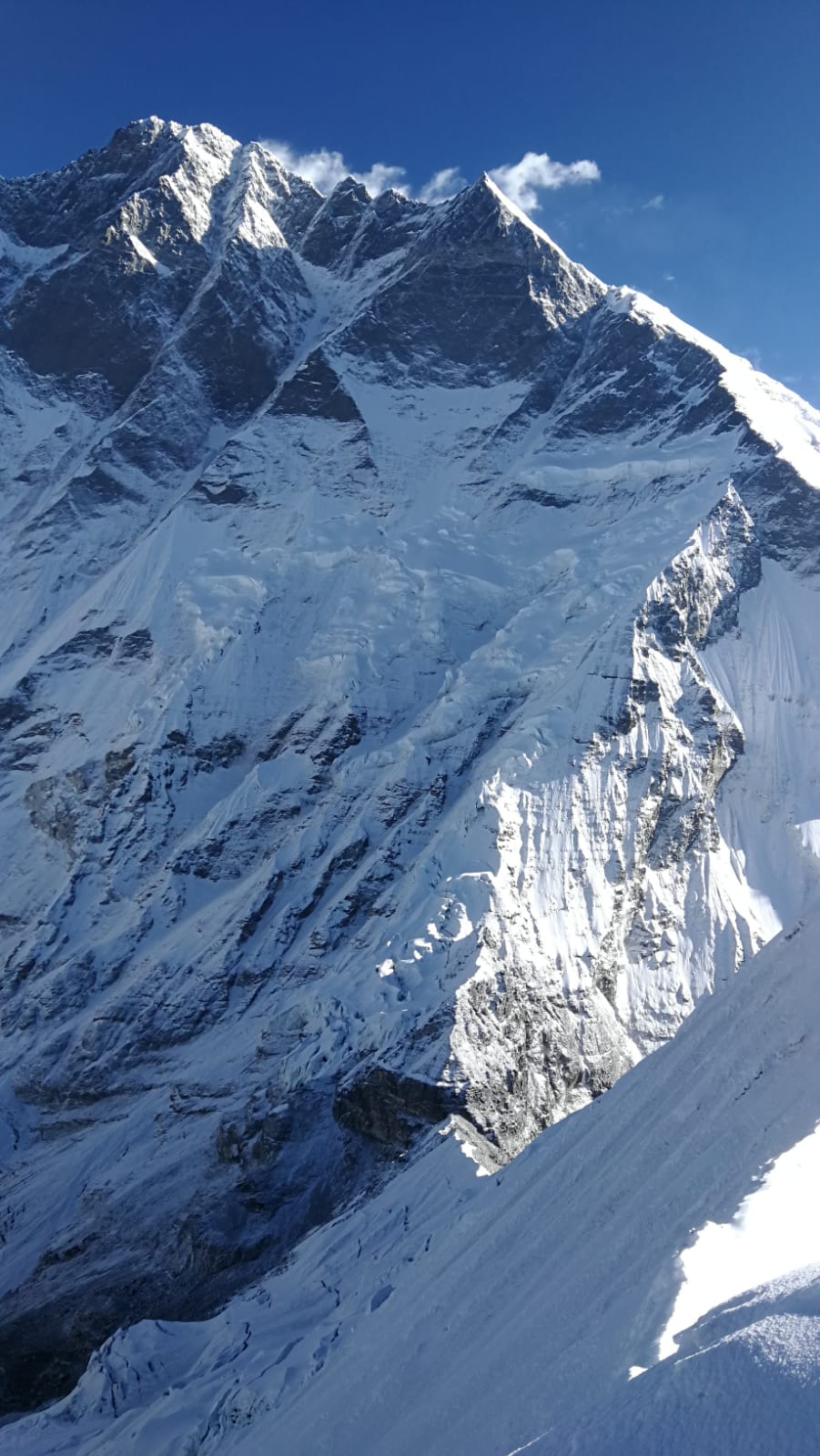Mera Peak (6461m) and Island Peak (6189m) climb
This is a strenuous guided mountain expedition to the Nepalese Himalaya to climb the famous trekking peaks of Mera Peak (6461m) and Imja Tse (6189m), a three week trip that offers two high mountains which are both achievable for someone with good alpine skills up to PD/PD+.
Both mountains offer different challenges. Mera is high but has few objective dangers like crevasses, whereas Island Peak (known in Sherpa language as Imja Tse - tse means peak and imja means island) is almost like a mini Everest in terms of it's challenges. In fact the route we use is the same as Hillary and Tenzing used back in 1953 in preparation for their successful Everest climb. There is a headwall which is a little like a mini Lhotse Face, a narrow ridge to the top like the SE Ridge on Everest, and a short section of broken seracs and crevasses a little like a mini Icefall.
Previously we might have crossed from one mountain to the other over the Amphu Lapcha Pass but that is largely impassable now due to the impact of climate change. Either snow- loaded slopes or dry slopes with danger of rockfall. So we now trek to Mera first and then cross into the Khumbu valley over the Zetra La and continue up to Island Peak on the Everest trail.
Mera Peak is in the Makalu Barun National Park on the edge of the Khumbu region. At 6476m this is the highest of Nepal's trekking peaks and offers fantastic views from the summit including Everest, Lhotse, Nuptse, Makalu, Ama Dablam, Chamlang and Baruntse. This peak is not very technical but still requires members to be roped together.
Makalu to Everest Traverse the head wall of Island Peak
Island Peak is a more technical peak which requires the use of roped travel across crevassed terrain and a climb on fixed ropes up a headwall to an airy ridge. The headwall can be dry which means ascending on mixed rock and ice, and it is important to check the anchors especially if the descent is in the afternoon. This is a classic climb graded PD+/AD- depending on conditions, and is obviously at high altitude so acclimatisation is important.
Island Peak is at the top of the Chukkung Valley and is accessed by walking up the valley from Dingboche or the more interesting route which crosses the Khumbu Glacier at Lobuje and the Kongma La for an overnight camp below Pokalde Peak before descending into Chukkung village.













